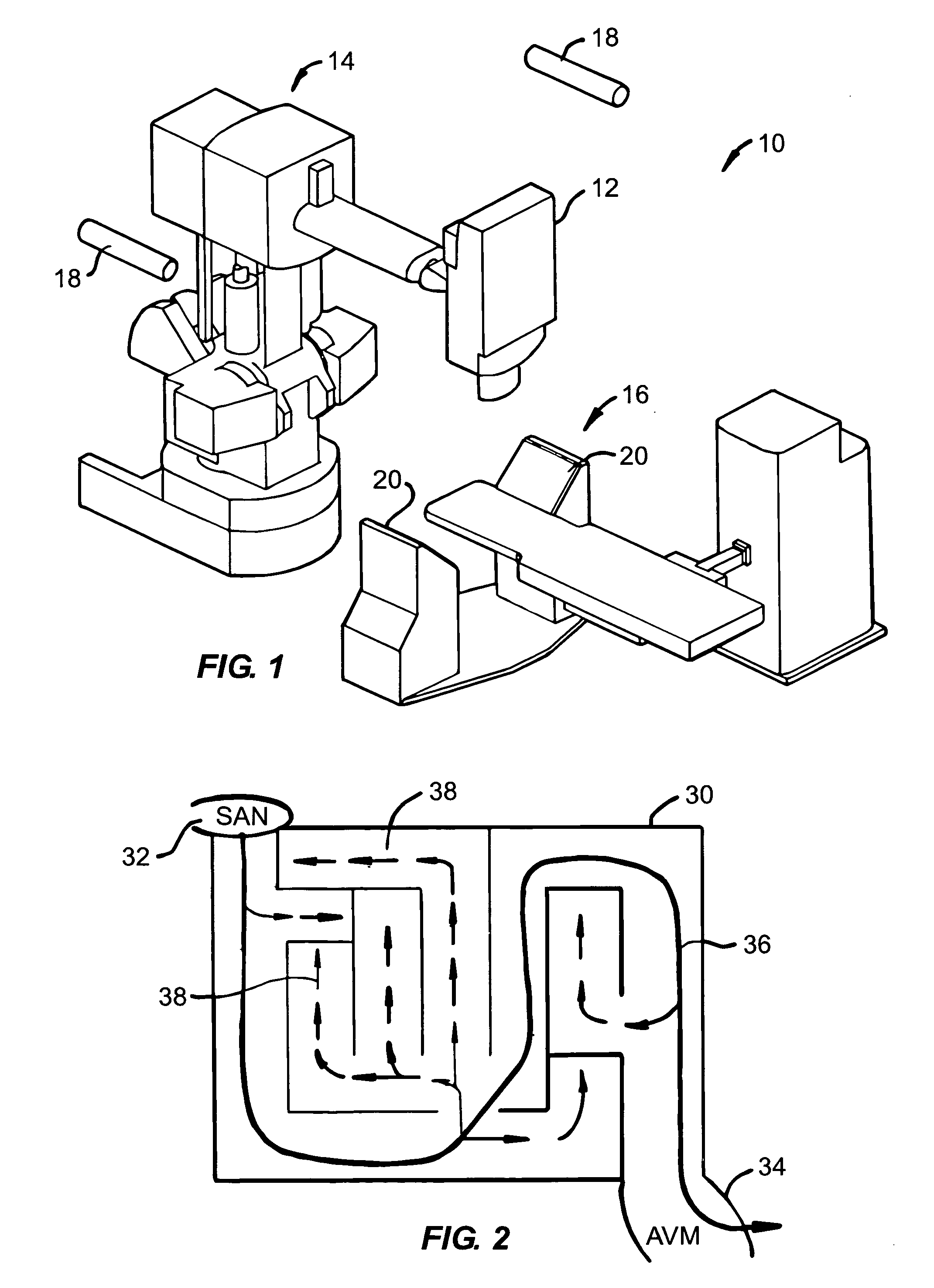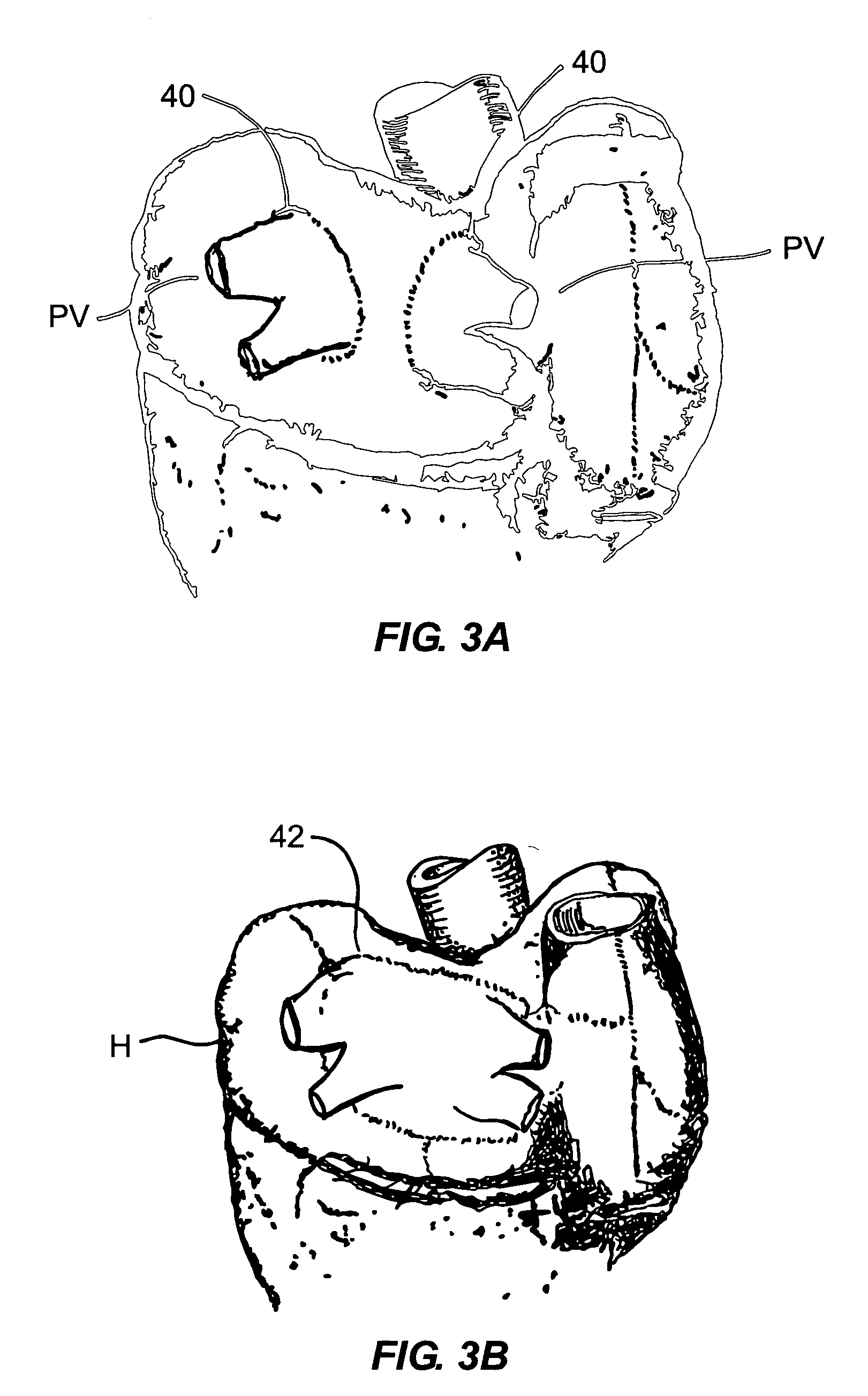System for non-invasive heart treatment
a heart disease and non-invasive technology, applied in the field of non-invasive treatment of arrhythmias, can solve the problems of low cardiac output, severe symptoms, and constant ra
- Summary
- Abstract
- Description
- Claims
- Application Information
AI Technical Summary
Benefits of technology
Problems solved by technology
Method used
Image
Examples
Embodiment Construction
[0026] Radiosurgery is a known method of treating tumors in the body. The radiation can be delivered invasively in conjunction with traditional scalpel surgery, or through a percutaneous catheter. Radiation can also be delivered non-invasively from outside the body, through overlying tissue. Advances in stereotactic surgery have provided increased accuracy in registering the position of tissue targeted for treatment and a radiation source. For example, see U.S. Pat. Nos. 6,351,662 and 6,402,762. Stereotactic radiosurgery systems may be commercially available from ACCURAY, INC. of Sunnyvale, Calif., and BRAINLAB. The Accuray Cyberknife™ stereotactic radiosurgery system has reportedly been used to provide targeted, painless, and fast treatment of tumors.
[0027] An exemplary Cyberknife stereotactic radiosurgery system 10 is illustrated in FIG. 1. Radiosurgery system 10 has a single source of radiation, which moves about relative to a patient. Radiosurgery system 10 includes a lightweig...
PUM
 Login to View More
Login to View More Abstract
Description
Claims
Application Information
 Login to View More
Login to View More - R&D
- Intellectual Property
- Life Sciences
- Materials
- Tech Scout
- Unparalleled Data Quality
- Higher Quality Content
- 60% Fewer Hallucinations
Browse by: Latest US Patents, China's latest patents, Technical Efficacy Thesaurus, Application Domain, Technology Topic, Popular Technical Reports.
© 2025 PatSnap. All rights reserved.Legal|Privacy policy|Modern Slavery Act Transparency Statement|Sitemap|About US| Contact US: help@patsnap.com



